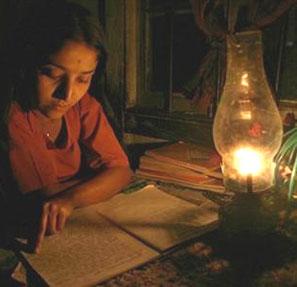Inclusive of the July hike of 25 paise, a monthly increase of similar amount would result in a saving of Rs 2.25 a litre for the current financial year alone.
 The government’s move to allow oil companies to increase kerosene price marginally every month to reduce the revenue loss on the cooking fuel by Rs 2.25 a litre, is only to test the waters.
The government’s move to allow oil companies to increase kerosene price marginally every month to reduce the revenue loss on the cooking fuel by Rs 2.25 a litre, is only to test the waters.
Initially, it would be done in nine instalments, inclusive of the hike earlier this month.
If successful and continued into the next financial year, it could turn the oil sector’s fortunes, with only liquefied petroleum gas (LPG) left in the subsidy basket.
Interestingly, it would translate into a similar increase by the Manmohan Singh government in two annual increases of Rs 2.51 in 2011 and Rs 2.23 in 2010, albeit a staggered approach.
Besides, direct benefit transfer (DBT) for kerosene is likely to be launched four months after its original schedule on August 1, for six districts in the Bharatiya Janata Party-ruled states of Gujarat, Chhattisgarh, Madhya Pradesh and Rajasthan. More districts will be added in the second round, to be launched on September 1.
A senior government official said although the monthly increases would not wipe out the loss completely, if sustained, it could help reduce the subsidy burden by Rs 2 a litre in future as well.
At the current level of revenue loss of Rs 13.12, it could mean a 17 per cent cushion for the government and its companies, which would be available even next year.
The decision comes even as the government is still not able to introduce DBT in kerosene.
Inclusive of the July hike of 25 paise, a monthly increase of similar amount would result in a saving of Rs 2.25 a litre for the current financial year alone.
Under recovery is the industry parlance for revenue loss incurred on account of selling a fuel below the global benchmark.
In case of kerosene, it is the preceding monthly average of Arab Gulf price.
The bold move to have a staggered increase in kerosene price is, however, not similar to the monthly diesel price increase and subsequent decontrol.
Kerosene price will continue to be controlled by the government. “The monthly increase may not continue beyond April 2017, if there is political opposition,” said the official.
The overall under recovery on kerosene is a decade low, both on account of lower global benchmark price and a government policy of reducing kerosene quota of states, based on the penetration of LPG, an alternate cooking fuel, and the level of rural electrification.
It stood at Rs 11,496 crore (Rs 114.96 billion) last year, down from Rs 30,574 crore (Rs 305.74 billion) in 2013-14.
Five years after the United Progressive Alliance (UPA) government increased the price of kerosene, the Union government, in July, wrote to the states to notify a marginal 25 paise increase in the rate for cooking fuel sold through the public distribution system (PDS) network.
The revenue loss on kerosene had increased to Rs 13.12 this month in the Delhi market, from Rs 11.73 in June.
The increase will benefit three government-controlled oil marketing companies (OMCs) - Indian Oil Corporation, Bharat Petroleum Corporation and Hindustan Petroleum Corporation.
Besides, crude oil and gas producing companies - Oil and Natural Gas Corporation and Oil India - that share the subsidy burden of OMCs would also benefit.
Both kerosene and domestic LPG prices are controlled by the Union government, though there is no subsidy on LPG if a household consumes more than 12 cylinders in a year.
Unlike DBT for LPG, introduced by the UPA government and later rechristened PAHAL after modification in the scheme by the current government, DBT for kerosene has a lot of ground to cover at the local and state levels.
The preparedness for kerosene DBT is visible in the four states, where about a dozen districts have achieved 90 per cent seeding of kerosene card with their bank accounts, said the official.
The UPA government had increased the kerosene price for two consecutive years, which led to an increase of Rs 2.51 a litre in 2011 and Rs 2.23 in 2010.
The 13-paise increase in 2012 was due to a hike in dealer commission.
The OMCs have been advised to increase the price at the depots. Since subsidised kerosene is sold through the PDS, state governments notify the new price at which the dealers would sell at the retail level.






